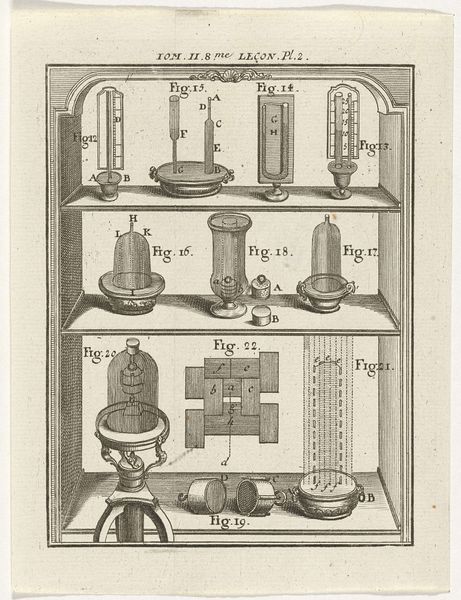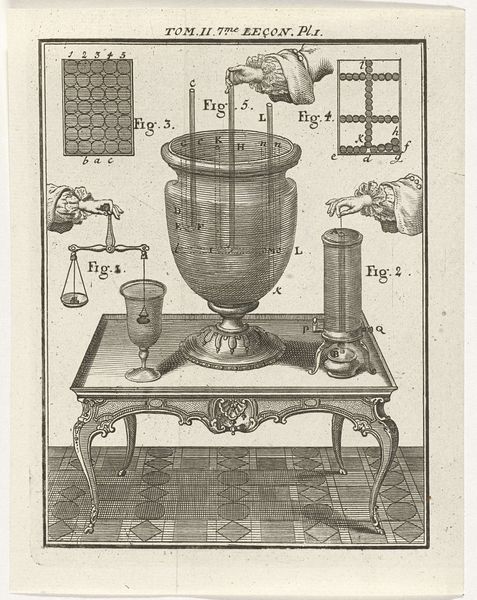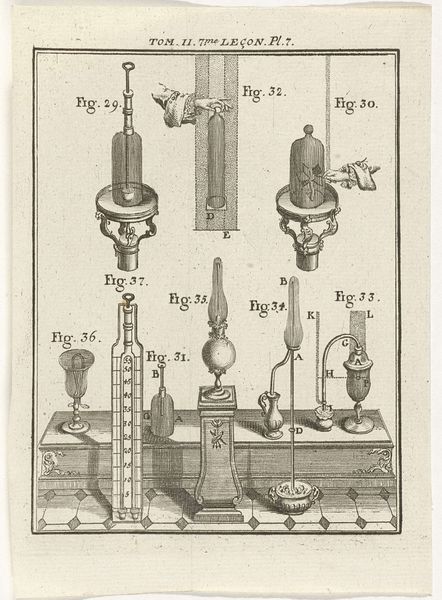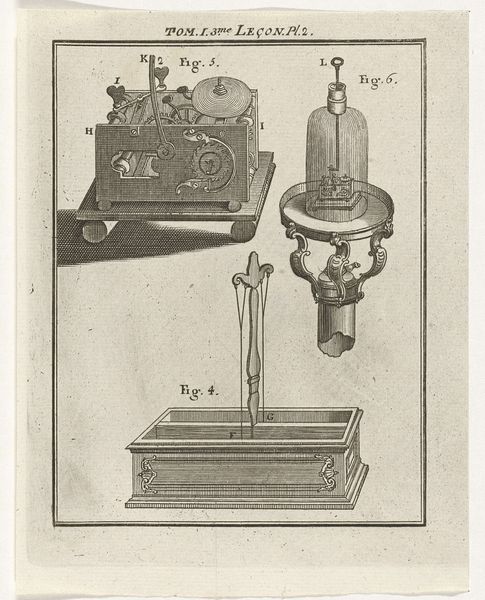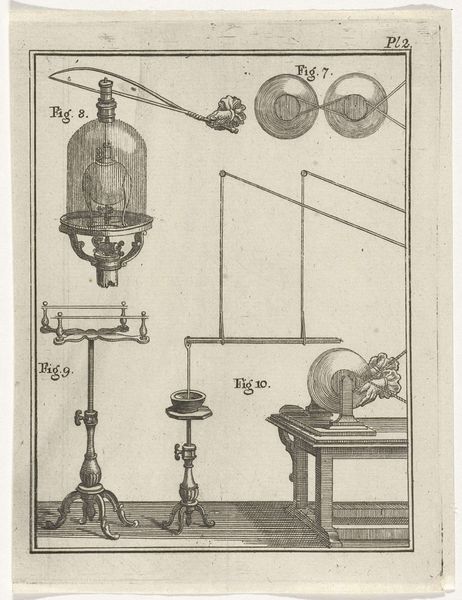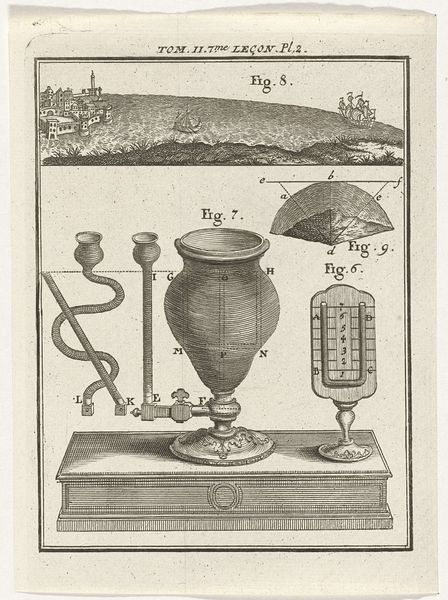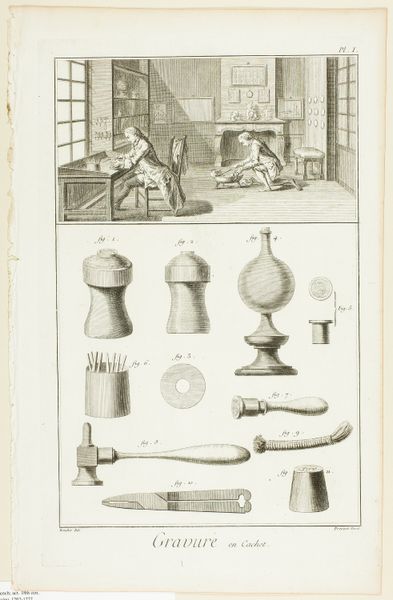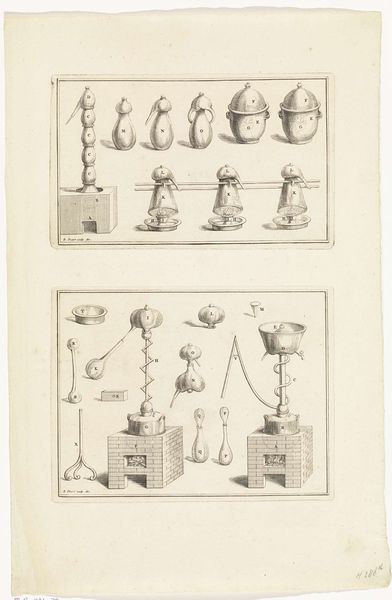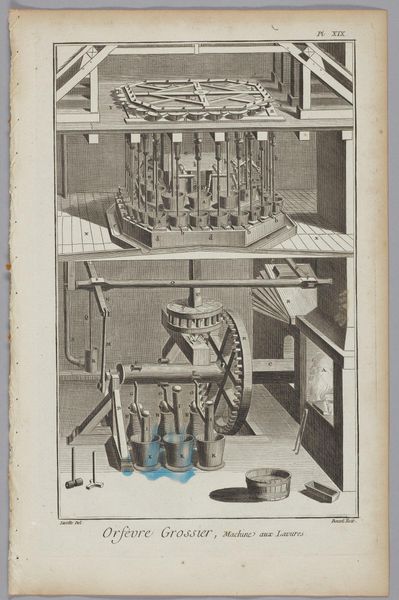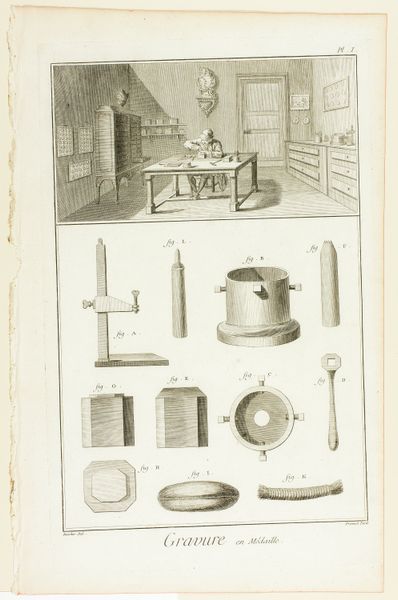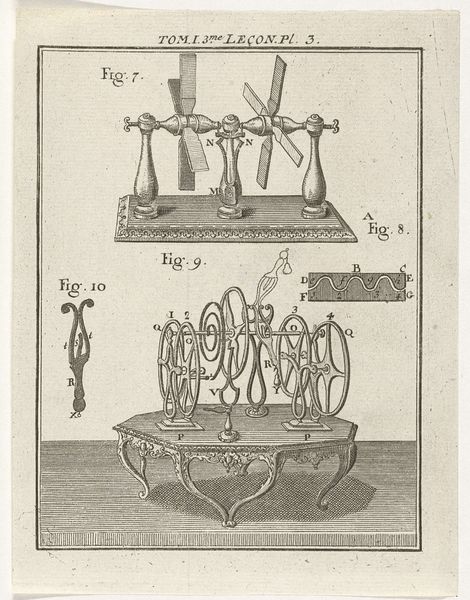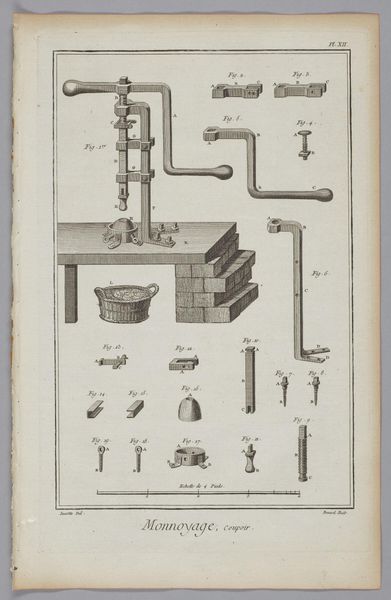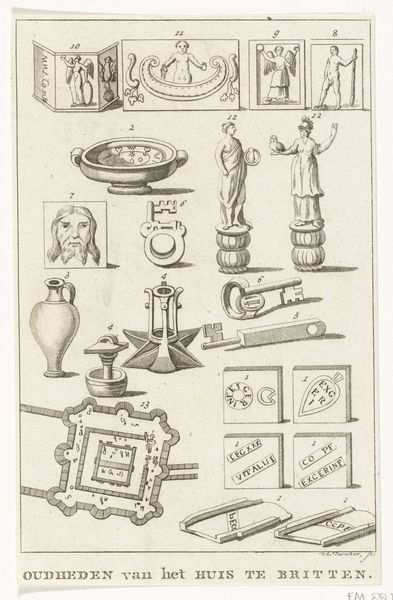
print, engraving
#
aged paper
#
blue ink drawing
#
baroque
# print
#
old engraving style
#
geometric
#
line
#
history-painting
#
academic-art
#
engraving
Dimensions: height 163 mm, width 127 mm
Copyright: Rijks Museum: Open Domain
Curator: This print, titled "Natuurkundige instrumenten," comes to us from 1759 and was crafted by Nicolaas van Frankendaal. I must say, at first glance, the careful arrangement of instruments within the framed shelving unit creates a fascinating still life, though in an unusual academic setting. Editor: Intriguing! I'm immediately drawn to the clean, precise lines of the engraving, and the visual clarity given to these, likely, incredibly important scientific instruments. There’s a coolness, a reserve about the image overall, typical, I imagine, of academic presentation in that period. Curator: Absolutely. The artist uses line and form to achieve a balanced composition that lends the presentation both scientific precision and a level of aesthetic elegance. Looking at the construction, you'll find common geometric forms in the image such as spherical and cylindrical bodies being incorporated into most, if not all, instruments pictured. Editor: And isn't that interesting, from a historical perspective, thinking about the public's relationship to scientific authority at this time? Displaying such instruments makes these sciences visible. The organization feels symbolic of a broader desire to classify and organize knowledge of the physical world as scientific rationalism begins to gain hold on European institutions. Curator: It is fascinating, I would argue the act of documenting the object also renders it fixed in space and time—a symbolic gesture toward taming unruly natural phenomenon. The materiality is fascinating to consider here as well. The work is a print—likely widely and inexpensively distributed in academic circles—engraved on aged paper with blue ink, adding a textural depth. The graphic depiction is further abstracted from any actual engagement with scientific advancement. Editor: Yes, there’s an odd flattening effect; these instruments, while represented with detail, are presented here almost like trophies or demonstrations, devoid of their active function. Curator: I appreciate that point. It highlights how art serves not just to document, but also to mediate our understanding of societal concepts, such as the authority of burgeoning scientific endeavors during that period. Editor: Indeed, it prompts us to consider how institutions choose to publicly frame intellectual pursuits, especially as part of that era's overall quest for societal rationalization. Curator: So true, a rewarding exploration. Thanks for your perspective on this unique and historically relevant print. Editor: My pleasure. Always enriching to consider these artifacts through different lenses.
Comments
No comments
Be the first to comment and join the conversation on the ultimate creative platform.
